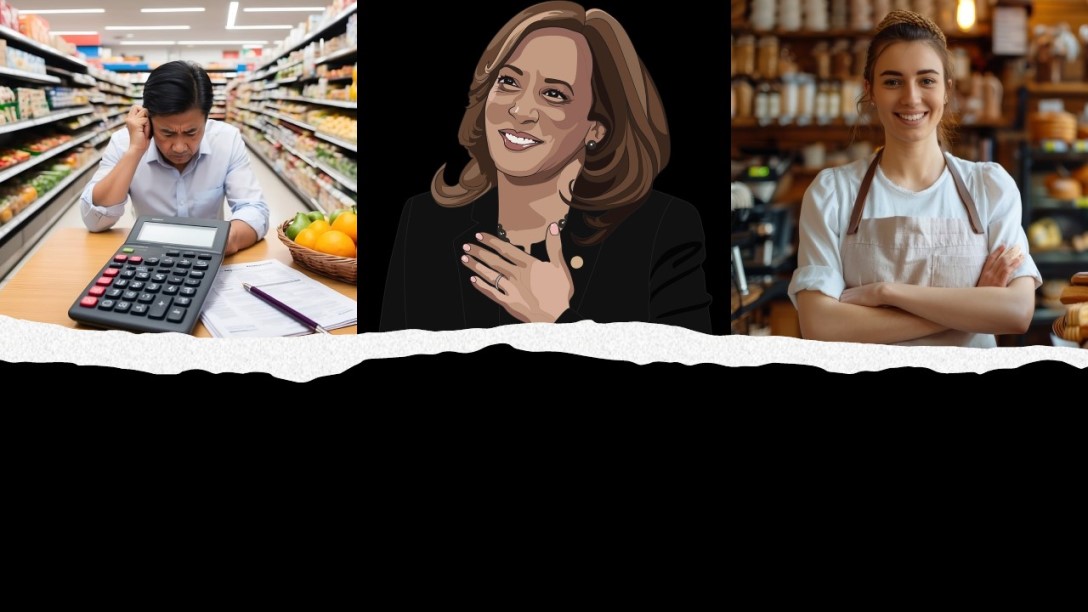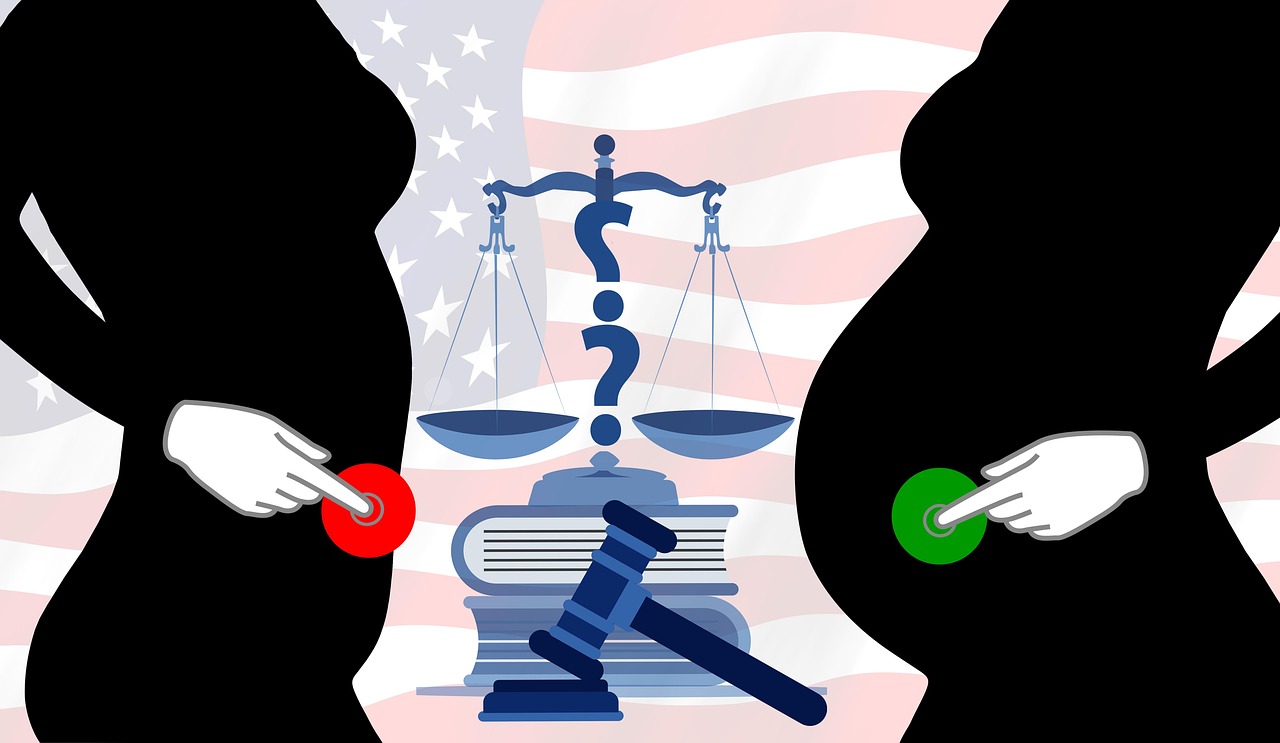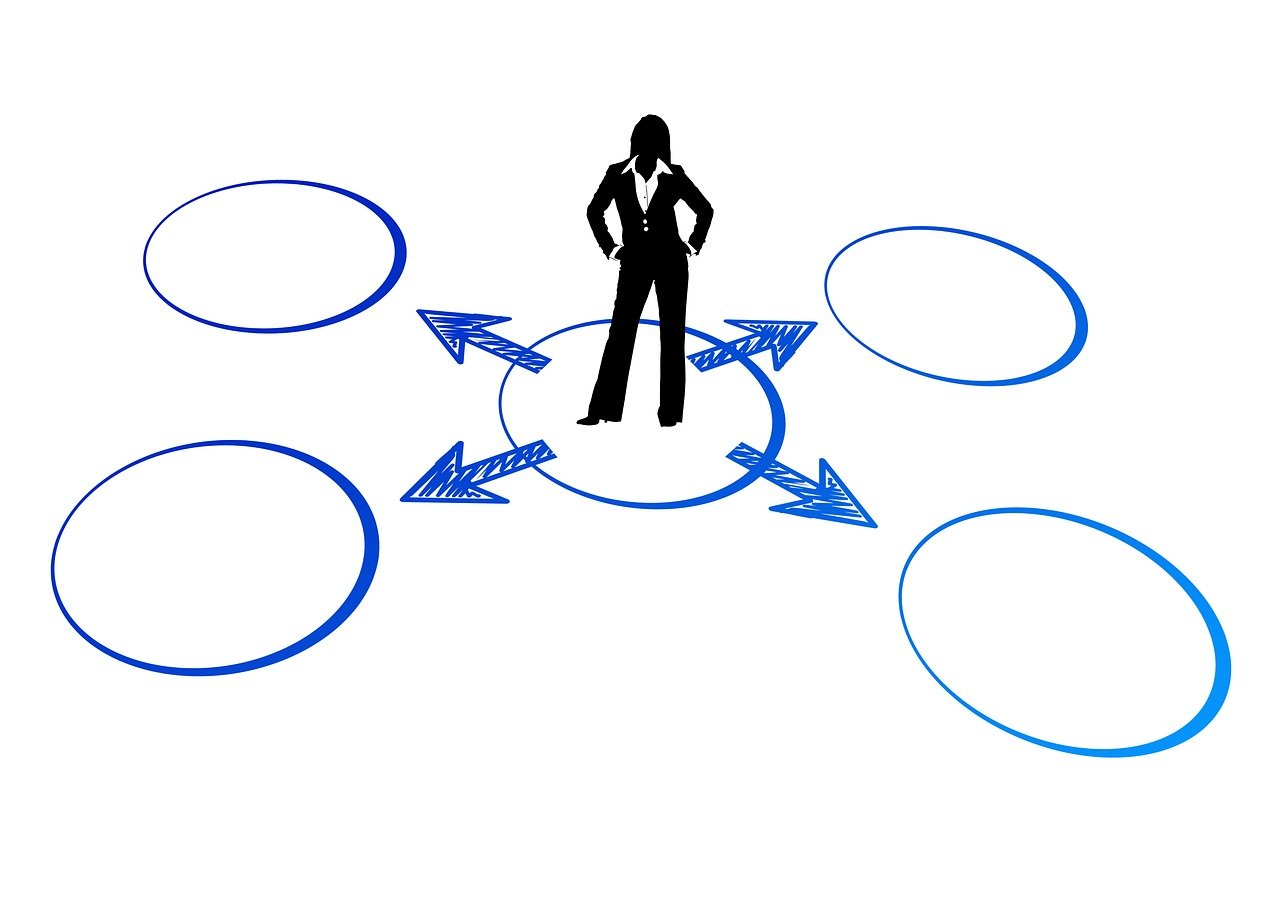Translating deep thinking into common sense
Harris’s “Wide-Ranging Economic Policy”—Arrest Your Greedy Baker

By Walter Donway
August 25, 2024
SUBSCRIBE TO SAVVY STREET (It's Free)
Economists, politicians, and bureaucrats never fail to illustrate, for us, the logic that drives the “mixed economy”—the supposed compromise between capitalism and statism, between the market economy and government economic controls.
Newly nominated Democratic presidential candidate Kamala Harris, unveiling her “wide-ranging economic policy,” proposed the first federal law against “price gouging,” in this case a proposed remedy for soaring food prices.
Why did food prices (and all other prices) begin rising about three years ago, embarrassing the Biden administration and handing Republican presidential nominee Donald Trump a potent campaign issue?
Grocery prices have surged some 25 percent since January 2020.
Was it really because three years ago food retailers and suppliers suddenly became greedy and unfair, seeking to maximize their profits at the expense of American families? Grocery prices have surged some 25 percent since January 2020. And food companies are profiting! A loaf of bread, “the staff of life,” is up a reported 50 percent since the COVID-19 pandemic (not sure to which of the hundreds of types of breads from hundreds of suppliers and local bakeries this applies, but the price-control bureaucrats presumably will figure all that out).
The remedy is clear: make the greedy supermarkets, grocers, wholesale food suppliers, and bakeries all lower their prices or face civil and criminal penalties.
The Mixed Economy—They Never Learn
We now can formulate a general rule of mixed-economy logic: Directly attack the apparent problem, the problem as experienced by the consumer (a.k.a. voter), and attack it in the name of defending the consumer against the greedy capitalists—in this case, the “gougers” at your local grocery. Note the most common other use of “gouge” is to gouge out someone’s eye in a no-holds-barred fight. No point in keeping this “policy” discussion emotionally neutral.
Laws against “price gouging” are not new. In a sense, they are as old as the marketplace, the distress over prices, and the demand that those in power do something.
Here is a brief legal definition and description from legaldictionary.net:
Price gouging is a term that refers to the practice of raising the price of goods, services, or commodities to an unreasonable or unfair level. Such an increase in price is often a result of a sudden increase of demand and shortage of goods, such as in the event of a natural disaster or other crisis, and it is illegal in most jurisdictions.
While many states have price-gouging laws to protect consumers, there are no federal laws regulating this practice. Price-gouging laws have, however, been held as constitutional, as law enforcement authorities and local governments have the authority to preserve order and protect the common good during an emergency.[1]
The “emergency” apparently was the pandemic, which reached its peak in 2020, and did interrupt some supply lines for goods. It is four years later, now. To let economists take a bow: “Mark Zandi, chief economist at Moody’s Analytics, told CBS MoneyWatch. ‘It may have been more of an issue back when supply chains were being disrupted by the pandemic, but today it’s hard to point to any significant, meaningful examples of price gouging.’”[2]
This brings us to another essential feature of mixed-economy logic: Never to refer to underlying causes of the economic distress that consumers are feeling. Why? Because consumers (voters) do not care? Perhaps, but the fundamental reason is that the cause will not be the action of the freely functioning market; it will be some earlier intervention that distorted the market. The vicious circle that always has characterized the mixed economy is that earlier intervention causes problems that then are used to justify additional interventions. So powerful is this self-fueled dynamic that at all times it has relentlessly driven the mixed economy step-by-step toward complete government economic controls—that is, socialist/fascist dictatorship. The evidence is everywhere around us.
The partisans of the mixed economy therefore must not point to the underlying causes of the soaring prices of eggs and bread because the cause is their own earlier interventionist policies.
What? This Is “Inflation”?
In March 2020, the United States shut down its economy, shuttering businesses and telling all nonessential workers to stay at home in an attempt to slow the spread of the COVID-19 pandemic virus.
The U.S. Federal Reserve Board, governor of the Federal Reserve System—the U.S. national bank since 1913, assigned by Congress to control inflation and ensure full employment—panicked at the U.S. shut down.
The cardinal felony of the “Fed” is to let the U.S. economy go into recession, no matter what the reasons. (It always seemed to me a like telling a doctor never-ever to let a patient become ill—no matter what!) Since 1913, of course, the U.S. economy has become defined by a boom-and-bust cycle, including the stock market crash of 1929 and the Great Depression some 16 years after the launching the Fed.
In 2020, the Fed panicked at the shutdown. How could this not cause a “recession”?
In 2020, the Fed panicked at the shutdown. How could this not cause a “recession”? It reacted over roughly the next two years with a policy of “quantitative easing” (buying up Treasury debt) to increase the entire money supply of the United States by 115 percent). That is, in less than two years, the Fed created new money to double that in circulation in the economy.
The American Institute for Economic Research provides details as follows:
US economic production, measured as real gross domestic product (GDP), fell by an annualized rate of 31.4% in the second quarter, the fastest ever recorded. The Fed quickly took action by cutting its interest rate targets to almost zero and by greatly expanding the supply of base money.
These factors led to a huge jump in the broader money supply. Figure 1 shows the 12-month changes in the M2 [the Fed’s estimate of total money supply] since 1982. In 2020, M2 increased by almost $4 trillion, by far the largest expansion in US history.[3] [Emphasis added]
It was unprecedented in the history of the Fed and America. Most economists realize that “inflation” is an increase in the money supply. (Few admit it because they are advocates of the mixed economy.) This increase in the supply of money, with roughly the same amount of goods and services in the economy, implies an eventual doubling of prices as twice the quantity of money bids for the same quantity of goods.
Perhaps the most famous statement on inflation was by the Nobelist economist of the “Chicago School” Milton Friedman: “Inflation is always and everywhere a monetary phenomenon.” In other words, a change in the money supply translates into changes in the general price level.
“Theoretically” (although it is not really part of the theory), a doubling of the money supply should double the general price level. Prices soon began to rise, then soar, and the Fed panicked once again and began raising interest rates at a pace also unprecedented in American history (the Fed was charged by Congress in the founding legislation with “stabilizing” the economy). The U.S. dollar in international exchange shot up, also at a historically unprecedented rate (the Fed was breaking records all over the place).
No, consumer prices across the board, although they rose enough to panic the Fed, have not yet doubled. Our economy is complex and so is the movement of this new money through the economy, first injected into the banking system. For example, over the next years following 2020, the three leading U.S. stock indices, the Dow, S&P, and Nasdaq, all more than doubled. This made the financial sector and many Americans with significant investments (including the usually well-heeled politicians) and all nonprofits with endowments such as universities, much, much wealthier. At the same time, as we all witnessed, U.S. real estate prices soared. Talk about “price gouging? Greedy homeowners selling their homes at three times what they paid? Greedy corporations selling their stock at doubling prices?
And, of course, the headlines of the financial news for well over two years now have chronicled the Fed’s “fight” against “inflation.” As though inflation had invaded from Mars to be fought by brave earthlings led by Fed Chairman Jerome Powell.
Who has questioned the role—and right—of the unelected Fed and its governors to trash the value of the American dollar?
And who among politicians or economists has cried out against the Fed’s deliberate inflation? Who has questioned the role—and right—of the unelected Fed and its governors to trash the value of the American dollar, raise prices for everything we must buy, driving home prices beyond the reach of many buyers, and rocket stock prices into a “bull market” that is now an unprecedented runaway boom just waiting for a bust? And yet, it is quintessential government intervention that characterizes the mixed economy.
Fining or Arresting Your Greedy, Gouging Bakery
It’s all right. Kamala Harris has come to the rescue of the American family, the consumer. She proposes to counter this government tidal wave of inflation by enacting federal civil and criminal penalties against your local Stop & Shop for “price gouging” you for your bread and eggs. Another essential principle of the mixed economy: the “consumer” is presumed to see only the cashier ringing up the price of the bread and eggs in the shopping cart. “Leadership” is to affirm that this is the problem, ignore the fundamentals of economics, and punish the wrongdoers.
Harris proposes to counter this government tidal wave of inflation by enacting federal civil and criminal penalties against your local Stop & Shop for “price gouging” you for your bread and eggs.
Mind you, this major policy initiative is not without a foundation, or we may say, an “election” logic: “[T]wo-thirds of voters polled by Yahoo Finance/Ipsos late last year…blame price gouging as a reason for high grocery prices….”[4]
Presto! Proof we need a new “wide-ranging economic policy,” one that confirms the consumer’s blinder view.
What in the end will be accomplished by this tempest in a baking pan? If unchallenged, the proposed policy will divert voter attention from the real causes of inflation in government policies. It will focus voters on the economic resentment, the envy, that is the emotional fuel of the mixed economy: the capitalist wrongdoer versus the government fixer. No voter in this election will learn about the real inflation that trashes the U.S. dollar and encourages China’s drive to dislodge hegemony of the dollar worldwide with a gold standard.[5] It also will divert all attention from the Fed’s role in enabling our roughly $33-trillion national debt.
No, voters will focus on the “problems” of greed and profit-seeking by those who produce, package, and deliver daily one of the world’s safest, most diverse, reliable, and accessible food supplies. And such voters will herald the latest champion of the mixed economy who will rescue us.
[1] https://legaldictionary.net/price-gouging/
[2] https://www.cbsnews.com/news/kamala-harris-dnc-economic-plan-price-gouging-ban-
[3] https://www.aier.org/article/do-these-money-supply-charts-portend-hyperinflation/
[4] https://www.cbsnews.com/news/kamala-harris-dnc-economic-plan-price-gouging-ban
[5] https://www.thesavvystreet.com/china-now-sets-the-world-gold-price-preparing-for-a-gold-backed-currency/
Related Posts:
About the Author: Walter Donway
-

Affirmative Action for Intellectual Diversity?
April 14, 2025
-

“Deep Learning”—But Is It Conscious?
April 10, 2025
-

AI: Intimations of “Emergence”
April 10, 2025
-

The Neuroscience of Cringe: Why the Past Still Burns
April 6, 2025
-

The 2025 Election: Australia vs the Global Deep State
April 1, 2025
-

Why the Trump-Musk Tour of Fort Knox Matters
March 29, 2025
-

A Meeting of Minds
March 27, 2025
-

Abortion and the Minimum Wage Law
March 24, 2025
-

Federalism or Anti-Federalism—That is the Question
March 24, 2025
-

A Most Humane Solution for All Peace-Loving Gazans
March 22, 2025
